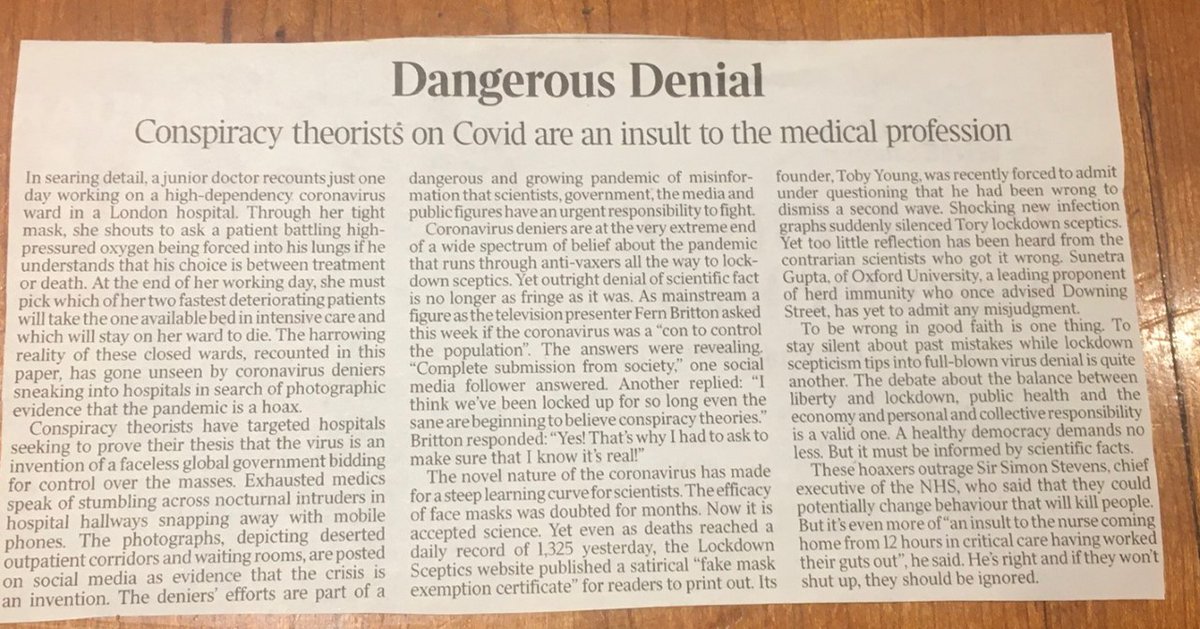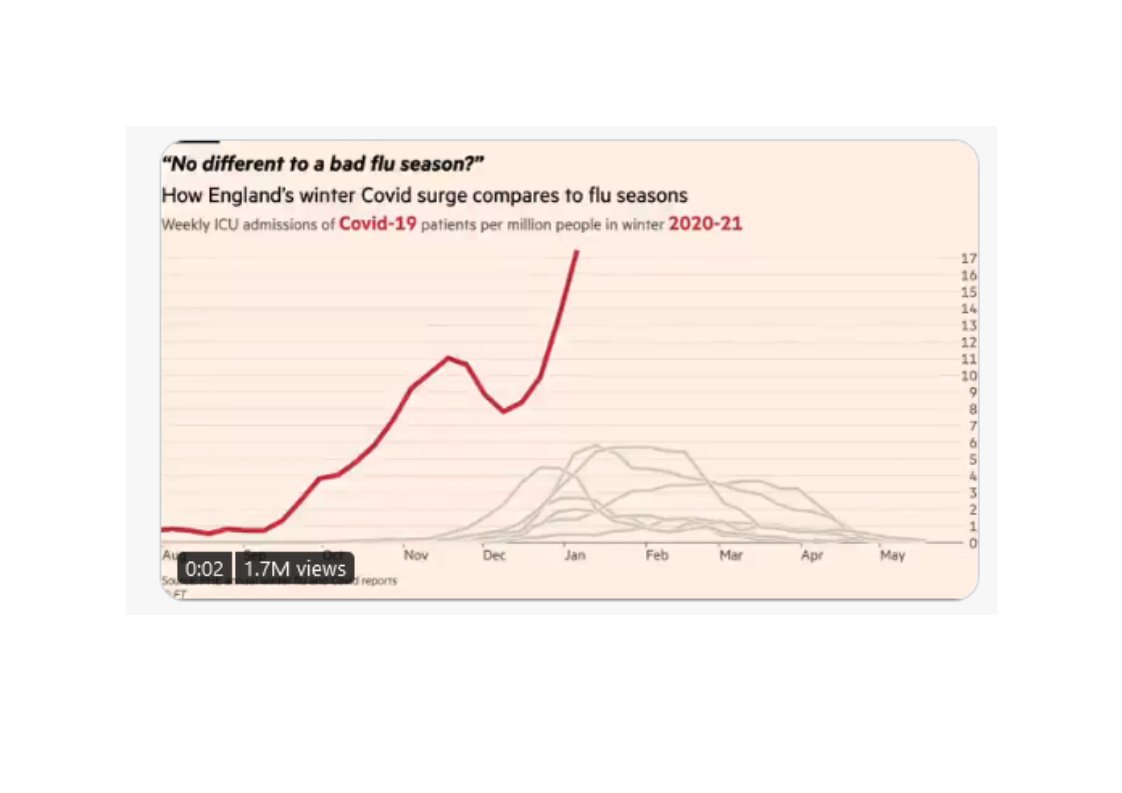
1/20 Front page of @thetimes features our story that, with just 24 days until the start of the new financial year, there is still no agreed NHS budget. Trusts facing a £7-8 billion gap for the first half of the financial year. Thread with detail below. thetimes.co.uk/article/cuttin…
2/20 NHS trusts are concerned that there is still no agreement on the NHS’s 2021/22 budget, just 24 days before the new financial year starts. This is despite the Chancellor and Prime Minister’s assurances that that the NHS would get what it needs to fight COVID-19.
3/20 Trusts now worried that they may have to start planning cuts to frontline services from April 1 unless negotiations are concluded satisfactorily this week. Last week's Treasury Red Book shows NHS funding gap for first half of 2021/22 could be as large as £7-8 billion.
4/20 The NHS frontline revenue budget for 2021/22 will be made up of three different elements. 1. The original increase in NHS England’s budget promised in the Government’s 2018 multi year funding announcement and enshrined in the NHS Funding Act 2020. This will be £136.1bn.
5/20 2. Extra non recurrent 2021/22 £3 bn revenue funding announced in last November’s Spending Review. £1 billion for hospital care backlog recovery, £500m for extra mental health capacity & £1.5 billion to recognise covid impacts such as lost NHS efficiency savings/income.
6/20 3. The extra costs NHS will incur in 2021/22 in dealing with COVID-19. Red Book currently only covers first two elements, leaving an estimated gap of up to £7-8 billion for the first half of 2021/22, depending on size of extra, currently unknown, 2021/22 costs of COVID-19.
7/20 Despite assurances this would be sorted well before now, to enable NHS to plan 2021/22 properly, NHS still in negotiations with Government. Negotiating on extra COVID costs and what allowance needed for impact of the COVID peak on the NHS over the last four months.
8/20 Trusts are concerned the Government will now not fully meet all the NHS’s extra costs, given the significantly tougher approach to public expenditure set out in the Budget. And the decision to abandon previously agreed assumption of a 2.1% 2021/22 pay rise for NHS staff.
9/20 Trusts have three major concerns. Concern 1. Chancellor and Prime Minister going to renege on their commitment to cover all NHS’s COVID-19 costs. That’s the clear signal sent by the decision to drop the agreed assumption of a 2.1% pay rise for NHS staff in 2021/22...
10/20 ...The Government is clearly now looking for other ways to meet those costs including robbing mainstream NHS budgets. The Chancellor needs to treat the NHS in the same way he’s treated other COVID costs like the furlough scheme – extend the existing approach to September.
11/20 Concern 2. The Government fails to acknowledge how much has changed since last November’s spending review and fund NHS accordingly. COVID pressures on NHS have dramatically worsened since then. Well over a third of all Covid hospitalisations have occurred in this period...
12/20 ...NHS still has 15 hospitals worth of Covid inpatients and critical care still massively stretched. Trusts have incurred extra costs extending into 2021/22 and not been able to identify 2021/22 efficiency savings / re-establish other income in way assumed last November.
13/20 Concern 3 These negotiations are taking far too long. NHS leaders have got much more important tasks than worrying about whether and how they may have to cut services from 1 April. They need the planning certainty they were promised. And they needed it weeks ago.
14/20 The absolute worst case scenario is that the Government refuses to cover any extra 2021/22 covid costs next year. That would leave the NHS with an unthinkable £7-8 billion gap for the first half of next year. No-one believes this will happen.....
15/20 ....But if Govt tries to cheese-pare on covering NHS’s extra covid costs and refuses to acknowledge what has happened since last November, NHS could be left with a sizeable whole year gap of up to £1 billion. Filling that gap would take a huge amount of extra new work...
16/20 ....None of this extra work is currently planned. And NHS/trusts would need to develop these plans just at the point when we all need to be focussing on recovering care backlogs and vaccinating the rest of the nation including second doses. Why put this in jeopardy?
17/20 Trusts want 3 things. Ask 1. They want these negotiations completed this week so they can plan for the first half of the new financial year with certainty. Ask 2 They want Chancellor/PM to honour their promise that Govt will fully reimburse the NHS’s extra COVID costs.
18/20 Ask 3. And they want the Government to recognise that the last four months of pandemic peak have added an extra £500 million to £1 billion of costs that weren’t envisaged at the time of last November’s Spending Review. These now need to be funded in NHS 2021/22 budget.
19/20 If the Chancellor & PM Prime Minister can find extra funding for Test and Trace next year in excess of what the NHS is now asking for, they need to do the same for the NHS. It is also unacceptable that frontline NHS leaders don’t know what their 2021/22 budgets will be...
20/20 ...Just 24 days before the financial year is due to start. We rightly ask trust leaders to provide full value for taxpayers money. Not knowing your budget 24 days before the financial year starts makes that task nearly impossible. This must not happen again.
• • •
Missing some Tweet in this thread? You can try to
force a refresh




